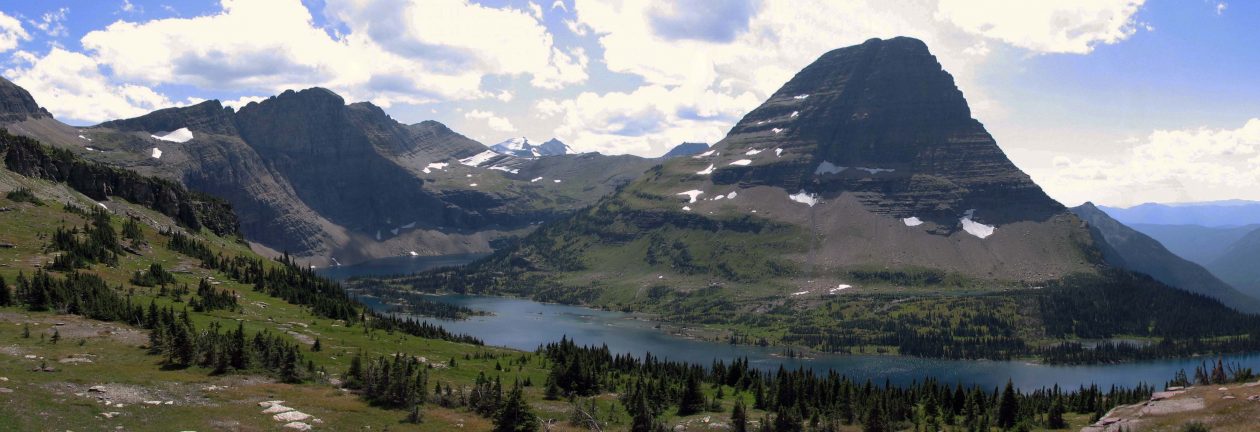Hospet, India
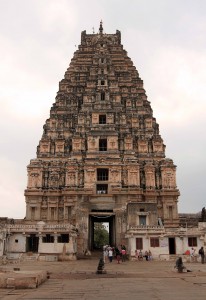
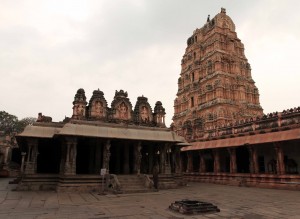
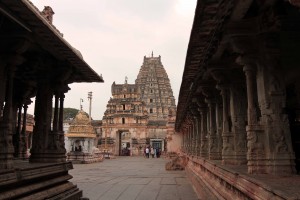
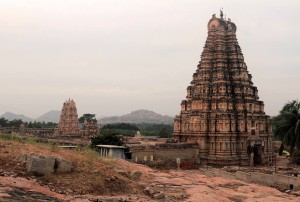
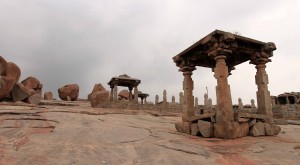
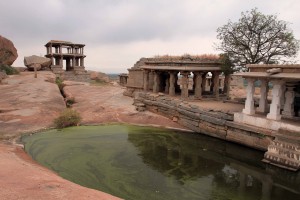
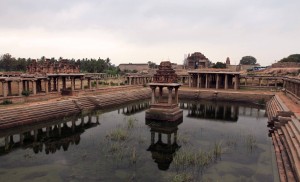
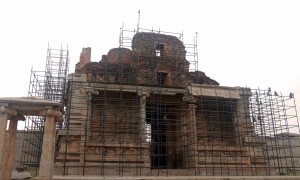
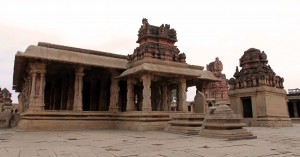
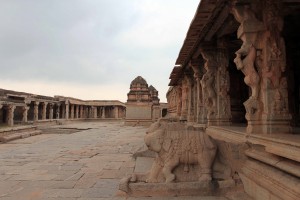
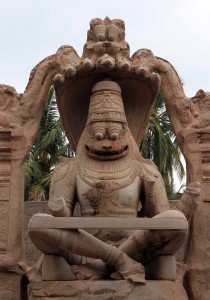
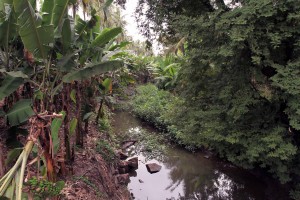
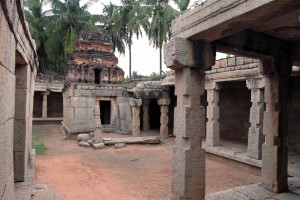

I woke up today after 08:00, got dressed, grabbed my camera, and walked to the Central Bus Station in Hospet; I then took the local bus to the Hampi Bus Stand (it was about a thirty minute ride). Upon arriving at the bus stand, I exited the vehicle and walked to the nearest site of interest in Hampi – the Virupaksha Temple; I paid the entance fee for my camera and I, and then walked around the temple grounds, looking at all the sculpted reliefs and Hindu idols; I also walked behind the temple and to the adjacent Matanga Tank (a large pool with red and white stripes painted on its steps and enclosing walls). After thoroughly touring the temple, I exited the grounds, collected my shoes (it was one of those shoeless temples), and walked up Hemakuta Hill, a large rocky hill with many boulders and stone structures scattered on its granite slope. I walked around the Hemakuta temples and enjoyed the panoramic views of the surrounding banana trees, sugarcane, and coconut trees (I have returned to the tropics), as well as all the other rocky hills and ancient temples one could see from up there. I then walked to the Sasivekalu Ganesha temple and the nearby Vishnu temple; after those quick visits, I walked to the Pushkarni (a tank filled with water and a small stone pavilion in its center) and the Krishna Bazaar; next I visited the Krishna temple across the road. The Krishna temple is built in Panchayatana style with two enclosures, the main shrine with the inner sanctum, a vestibule, pillared pavilions and halls, a Devi shrine, and many sub-shrines; I entered inside the main temple and, with iPhone flashlight in hand, walked through the dark, enclosed corridor that surrounds the inner sanctum; within this pitch black corridor were a few resident bats flying around; I then visited the Inner Santum itself, before exiting the main temple and walking around its outside. I then exited the Krishna temple complex and proceeded walking south-bound. Next I visited the Lakshmi Narasmiha temple, which has a monolithic statue of Lakshmi Narasmiha, the fourth incarnation of Vishnu, inside its walls; adjacent to this temple, is the Badaviling temple, which has a three meters high Shiva Linga inside. I then walked further south past many banana and sugarcane plantations to the Chandikeshvar temple. After visiting that quaint temple, I walked on down the road.
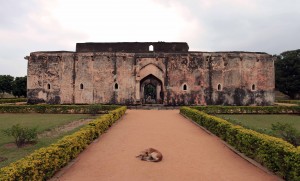
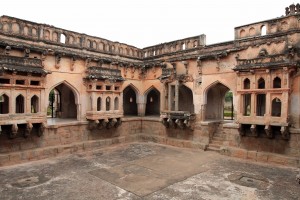
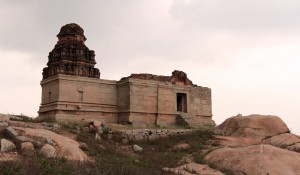
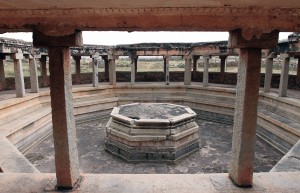
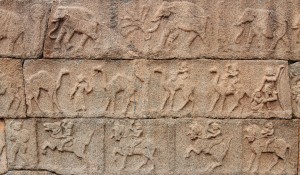
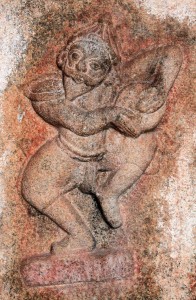
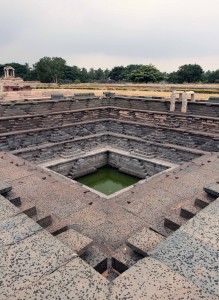
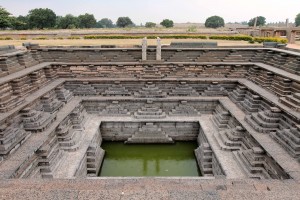
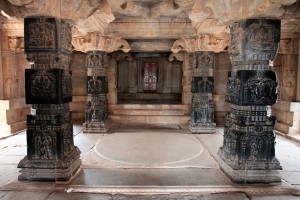
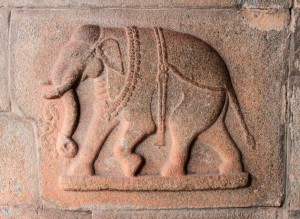
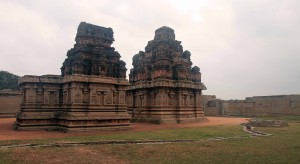
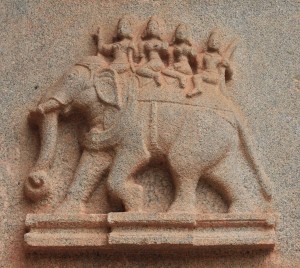
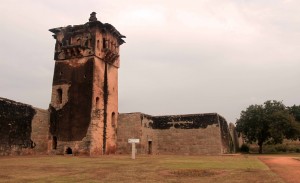
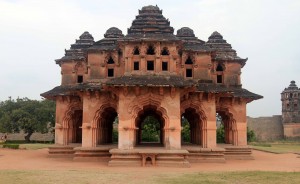
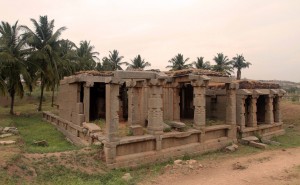
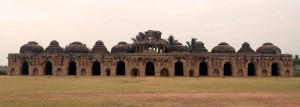
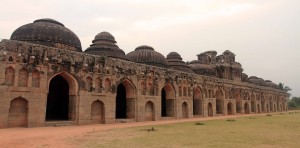
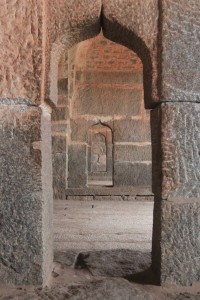
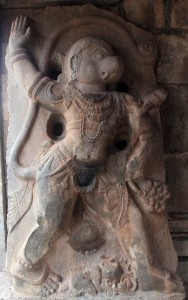
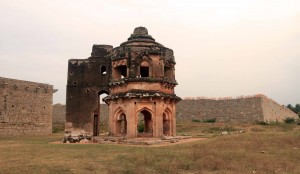
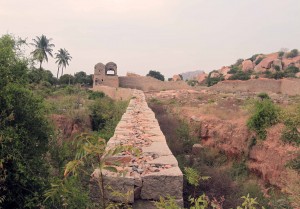
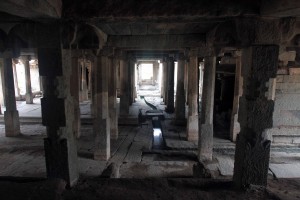
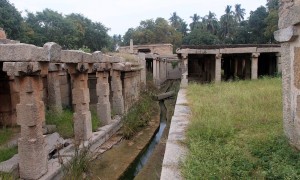
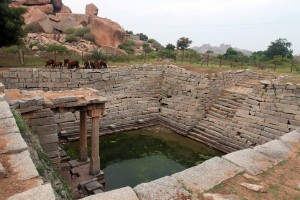
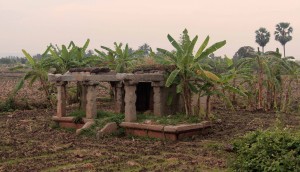
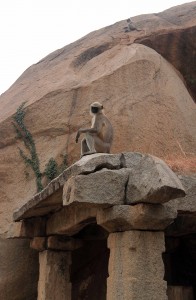
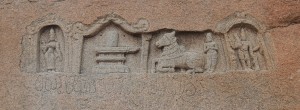
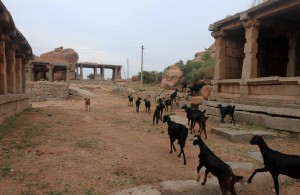
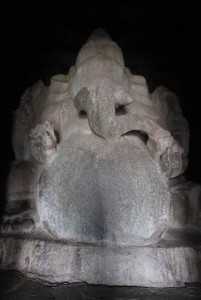
After a kilometer or so, I reached the Royal Center of Hampi; I continued on the road until I reached the Queen’s Bath, located southeast of the Royal Enclosure; the Queen’s Bath is an example of the Indo-Islamic style of Vijayanagara architecture and in the center of the structure is more of swimming pool than a bath; also, near to the bath is the Chandrashekara temple; the queen would bathe and purify herself before going to this temple. After visiting the bath house and the temple, I walked around the surrounding area, through dirt trails and thorned-bushes with many stickers, to see the Sarasvathi temple and the Octagonal bath. I then went off the beaten path, tried to find my way to the road, but couldn’t, scared a rabbit, and finally returned the way I came, continuing on the dirt road past the Queen’s Bath to the Royal Enclosure (remnants of the stone wall enclosing this space still stands). I entered inside the Royal Enclosure (the nucleus of the ancient capital city of Vijayanagara) and walked up to the top of the Mahanavami Dibba (a three-tier, pyramidal stone platform used for ceremonies and festivals by the royal family – it also had many nice reliefs decorating its stone blocks); then I walked to the Rushkarani (a cool looking, geometric stepped tank with an aqueduct built to drain in to it), the near by public bath (an olympic-sized bath . . .), the guards barracks (all that remains are the stone bases), the underground chamber, and the King’s Audience Hall or what remained of it. During this time, the dark clouds above spilt some rain from time to time, mostly just sprinkles and not lasting too long, but enough to get me a little wet. I then walked to the Hazararama temple (the only temple situated in the core zone of the Royal Enclosure, between the residential and ceremonial enclosures), which is dedicated to Vishnu in his aspect as Lord Rama and is a fine example of a compact Dravida Vimana type of temple. After exiting the temple, I walked to the remains of a nearby bazaar and a water tank before walking to the Zanana Enclosure; inside this enclosure is a water pavilion, several watchtowers, and the Lotus Mahal (a stylish two-storeyed building); just outside the Zanana Enclosure are the Elephant Stables (which has eleven large domed chambers, interconnected, to keep the large pachyderms), the guards’ quarters (now a small museum displaying several sculptures), the Ranga temple, and several Jain temples. I then walked to the Tennali Rama’s pavilion before walking to Danaik’s Enclosure (located west of the Royal Enclosure), which has the Palace of Vira Harihara, a mosque, a band tower, the remnants of the Palace of Krishna Devaraya, and a Mohammadan watchtower (on the northwest corner). The last site I visited in the Royal Center was the Prasanna Virupaksha temple (also known as the Underground Shiva temple). I then walked back to the Hampi Bus Stand, back the way I came, passing by some more ancient structures (another water tank and some more unidentified shrines and temples). Near the bus stand, I visited the Kadalekalu Ganesha, a monolithic sculpture carved out of a large granite boulder, that stands 4.5 meters tall. I then returned to the bus stand, took the local bus back to Hospet and returned to my hotel room around 17:00. I then relaxed inside, typed out journal entries, ate dinner (Aloo Gobi masala, Kaju masala, Ghee rice, Kadai paneer, and a 7-Up), watched the movie ‘Pain & Gain’ (this may be the only Michael Bay film I actually like, it was an enjoyable and funny film), and stayed up very late. I then went to sleep.
